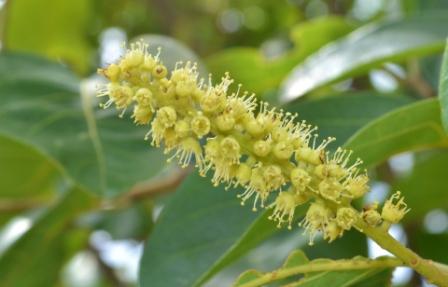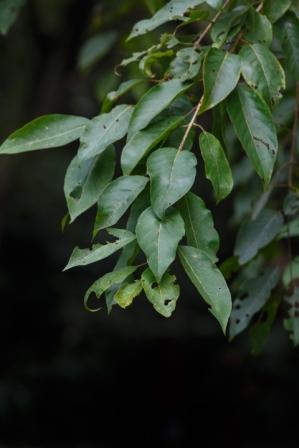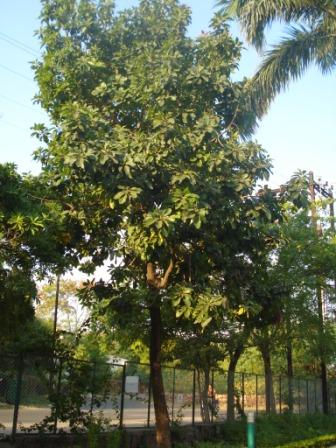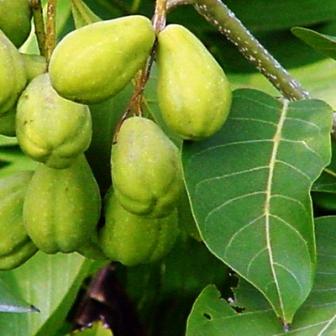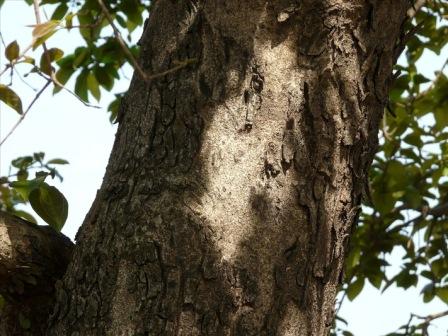Natural Regeneration :
- Natural regeneration is unsatisfactory because of poor germinative capacity of the seed.
Artificial Regeneration :
- Propagated by direct sowing and Nursery raised seedlings
Seed collection and Storage :
- Fruits are collected during May - June
- Two good seed years are followed by one or two poor ones.
- Tree growing in open fields give more fruits than those growing under congested conditions in the forests
- The seed are collected from the ground.
- Dried under shade and stored in gunny bag for 12 months.
- Seeds 140-790/kg.
- The germinative capacity is50 - 60%
- Plant percent is 40 - 50%
Seed Treatment :
- Seeds are clipped at its broad end without damaging the embryo.
- The clipped seeds are soaked in cold water for 36 hours.
Nursery Technique :
- The seed is sown in the shaded nursery.
- Seed is covered and watered regularly.
- Germination commences within 15 days
- Two leaf stage seedlings are pricked into poly bags and raised in nursery for one year.
Plantation technique :
- Pits of size 60 cm 3 are dug at a spacing of 6 m × 6 m.
- The soil of each pit is mixed with 15 kg FYM and a mixture of NPK @ 75:30:30 g and refilled before transplanting of seedlings
- Transplantation of one-year-old saplings is done in the next monsoon.
- A spacing of 6 m × 6 m enables a crop stand of 280–300 plants per hectare.
Care & Disease Control :
- Plantation must be weed free.
- Irrigation in pit areas is required in the initial three to four years, depending on the soil moisture and season.
Recommended Harvest :
Yield :
- Approximately 40–50 kg of dry fruits are obtained per tree per year after it attains six years of age.
- This gives an average yield of about 12.6 quintals/hectare.
Major uses :
- Fruite is used as a medicine.
Other uses :
Edible Uses : Seed - eaten as a snack. They have a flavour reminiscent of almonds or filberts. An edible oil is obtained from the seed. Fruit. The sour fruits are eaten in salads, preserved in brine or fried. The yellow to orange-brown obovoid fruit is


